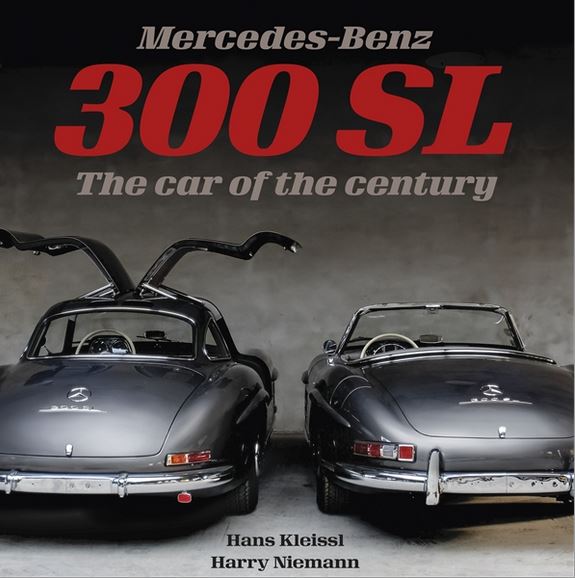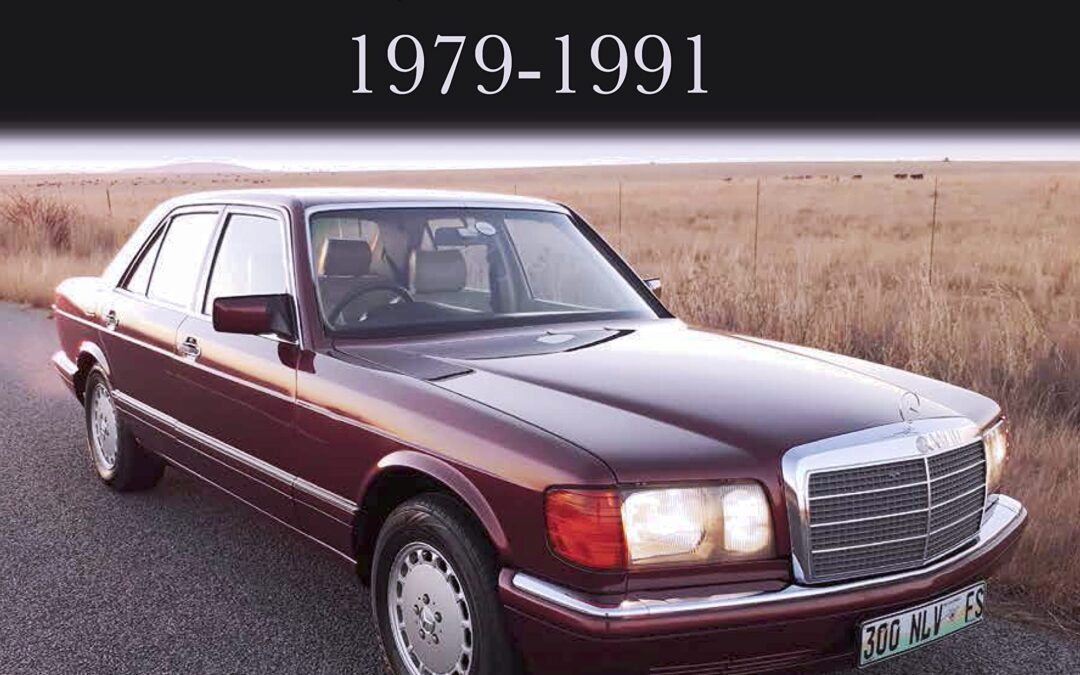
“You don’t simply decide to buy an S-Class: it comes to you when fate has ordained that your life should take that course. The door closes with a reassuring clunk – and you have arrived,” said the sales brochure of the first real Sonderklasse, the W116. The Mercedes 126 S-Class of 1979-1991 remains the most successful premium saloon in the company’s history and is considered by many to be one of the best cars in the world. With over 300 colour photos and production histories and specifications for both Generation One and Two models, this is an essential resource for anyone with an interest in this timeless car.
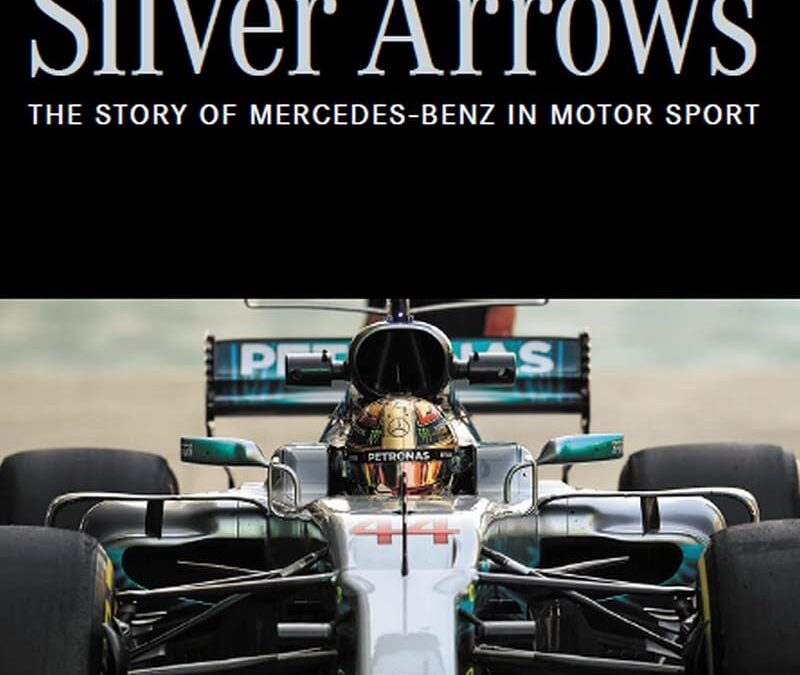
Lewis Hamilton’s record-breaking achievements in F1 are the latest successes in a glorious motor sport record for Mercedes and Benz that stretches back to the very first races in the 1890s. Silver Arrows celebrates the achievements of Mercedes and Benz in motor sport, from the very earliest days to the record-breaking success of Lewis Hamilton in F1. It covers every major era and form of motor sport including: ·The pioneers of motor sport and the ‘White Elephant’ SSK ·The massively powerful 1930s Grand Prix cars ·Le Mans, sports and F1 cars of the 1950s ·Rally cars from the 1950s to the 1970s ·Touring car racing and the DTM ·The Mercedes return to racing in Group C sports cars ·F1 engines and the Mercedes Grand Prix team ·Formula E and the future of Mercedes in motor sport
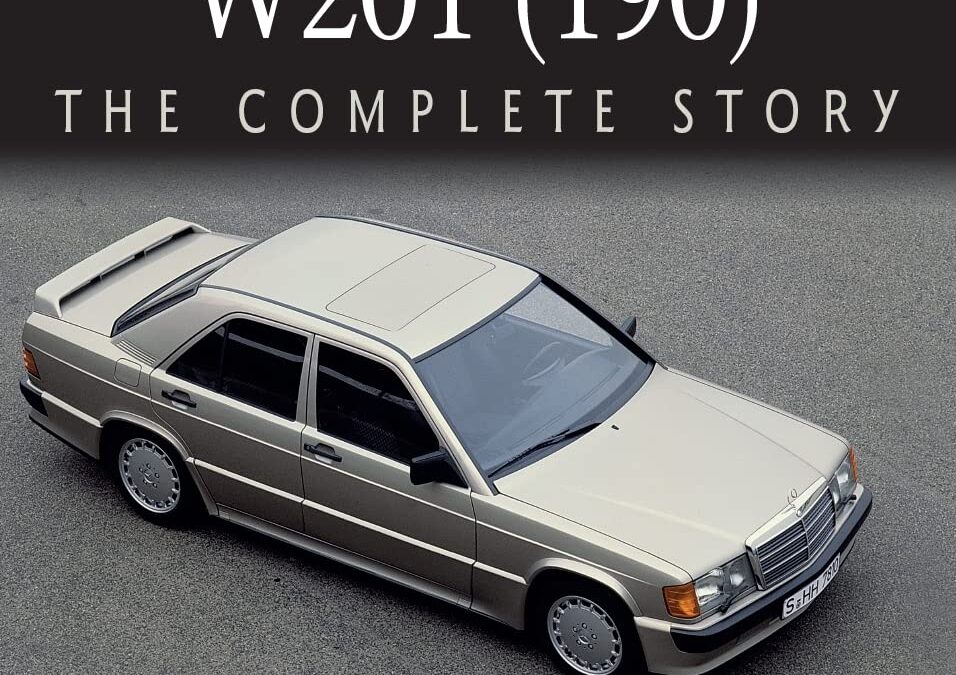
The Mercedes-Benz W201 was a compact saloon designed to address both concerns about fuel economy generated by the first oil crisis in the 1970s and competition for sales from the BMW 3 Series. Many doubted that Mercedes could deliver a compact car whilst retaining their traditional qualities. But the W201 soon won them over, for here was a car that was a real Mercedes in the tradition of the time – it was just smaller. With around 200 photographs, this book features the reasons behind the need to build a new compact saloon in the 1980s and the styling, engineering and specification changes introduced over the lifetime of the model. Full technical specifications, including paint and interior trim choices are given. A chapter on the special US variants along with production tables and vehicle number sequences and, finally a chapter on buying an owning a 201-series Mercedes.
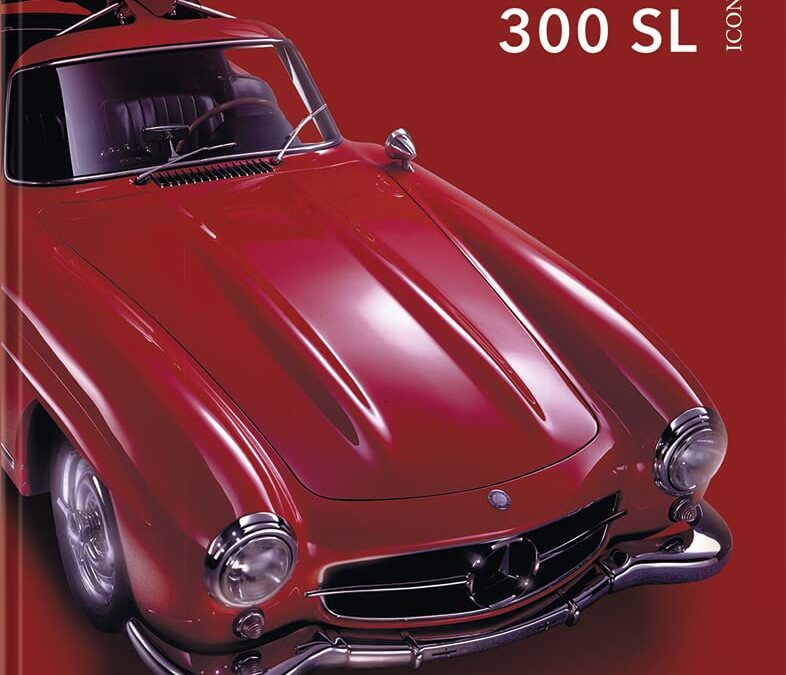
Hard facts, soft skills: technical data, casually recounted anecdotes, and plenty of interesting lifestyle information
• On track and on the screen: the successes of the 300 SL in racing and its many appearances in the movies and on television
• A must-have for all gullwing fans
In 1954, the Mercedes-Benz 300 SL was unveiled at the International Motor Sports Show in New York — the start of an unparalleled success story. Victories in the 24-hour race at Le Mans and the Carrera Panamericana made it world-famous. It also possessed groundbreaking technology, including the first series-production fuel-injected engine. Its elegant shape and futuristic gullwing doors made it a coveted prize, symbolizing exclusivity and freedom. This volume has everything that is important about the legendary sports car: wonderfully aesthetic automotive photography by René Staud and archive pictures rich in patina, snapshots of racing successes and famous owners, and interesting facts from the model’s history to the colors of the paintwork.
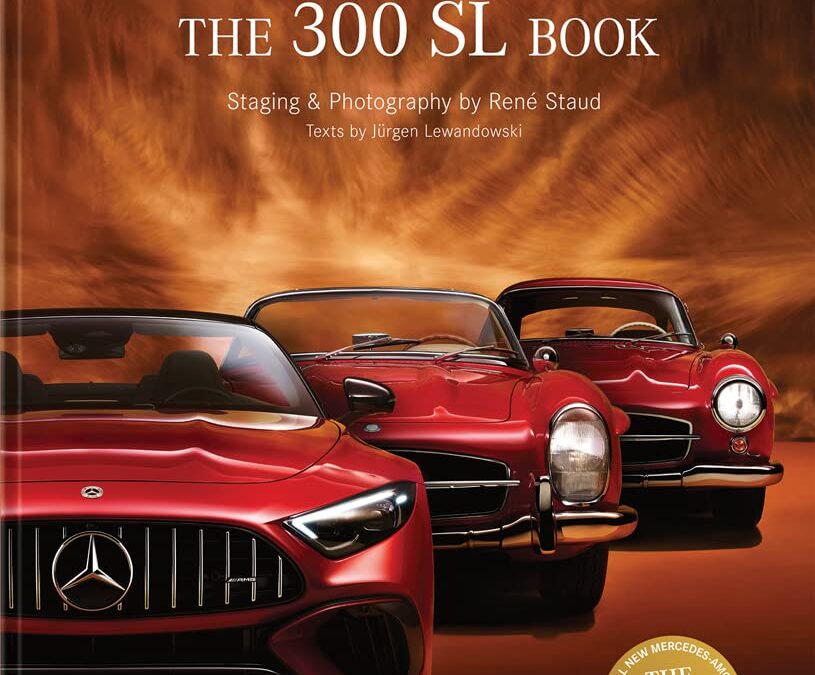
- The completely revised bestseller by René Staud and Jürgen Lewandowski in a 70th Anniversary Edition
- An inspiring and must-have treasure trove for all fans of the “sports car of the century”
- Photographer René Staud and author Jürgen Lewandowski are synonymous with expertise of the highest caliber when it comes to automobiles
This iconic sports car, from the first Mercedes 300 SL to its latest successors, proves that technology can indeed evolve into art. And who better to showcase this procession of pioneering automobiles than René Staud, whose striking photographs will captivate any enthusiast. This book, based on Staud’s successful calendars, is an ode to an extraordinary vehicle whose spell stars such as Grace Kelly, Frank Sinatra and Alfred Hitchcock have all fallen under. The elaborately orchestrated pictures show sleek curves and precision in every detail, conveying the passion for this breathtaking automobile. A photographic tribute to the “sports car of the century”, covering the 70-year history of the 300 SL racing car models from 1952 to the latest SL generation.
Text in English, German, and French.
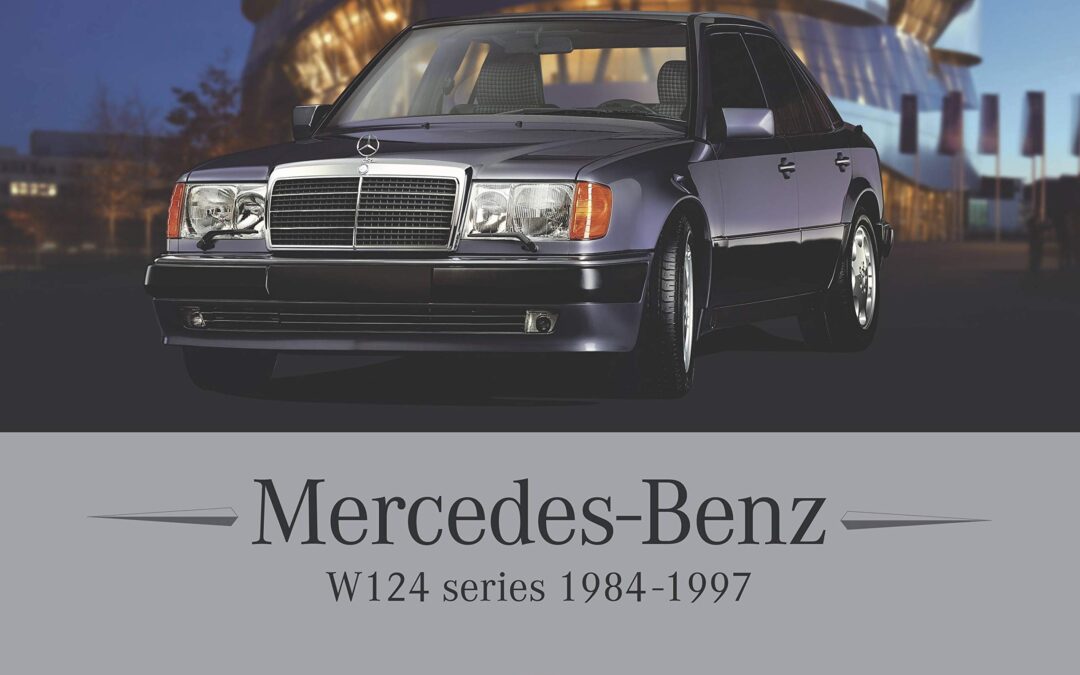
Researched and written with the full co-operation of the factory, here in definitive detail is the story of the Mercedes-Benz W124-based range – a series of models that included saloons, estates, coupés, convertibles, lwb cars, and special chassis units that enabled coachbuilders to work their art.
Building on the W123 formula that had created a best-seller, the 124-series models were an immediate success. They went through two major face-lifts before the last of the breed was killed off in 1997, and remain as popular as ever as a modern classic for enthusiasts.
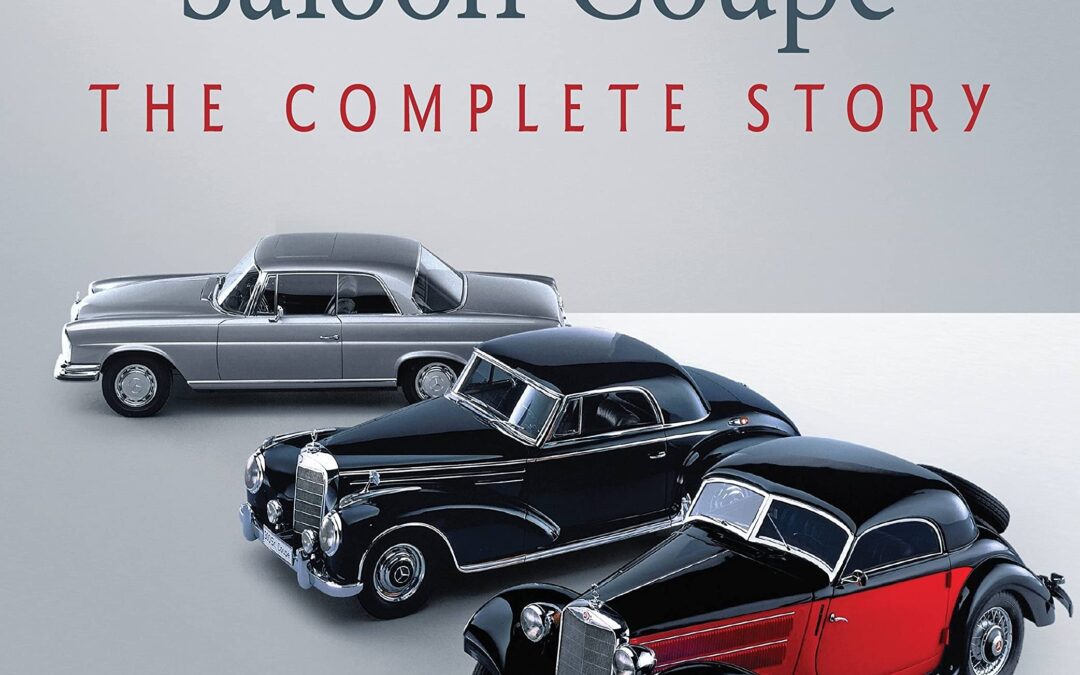
First produced in 1928, Mercedes-Benz Coupés became the embodiment of elegance and exclusivity on four wheels. Their design became an experience for all the senses, appealing to every emotion.
Hans-Dieter Futschik, the designer responsible for many of the later Mercedes-Benz models, said of the Saloon Coupé: ‘A shorter wheelbase compared with the saloons gives it different proportions that are almost sports car-like in character. The passenger compartment is set further back. This gives it a sportier look than a saloon. In addition, the greenhouse is smaller and more streamlined than the basic body. It looks like a small head set on a muscular body, exuding a powerful and more dynamic attitude… Everything radiates power, elegance and agility.’
This complete guide includes an overview of early automotive history; pre-merger design from both Benz and Daimler; the historical protagonists and how they influenced the design; how design and fashion change vehicle shape; the continued development of Saloon Coupe design to suit every class and finally, the modern idea of the Coupe.
With over 200 photographs and illustrations, this book includes:
- An overview of early automotive history
- Pre-merger design from both Benz and Daimler
- The historical protagonists and how they influenced the design
- How design and fashion change vehicle shape
- The continued development of Saloon Coupé design to suit every class
- The modern idea of the Coupé.
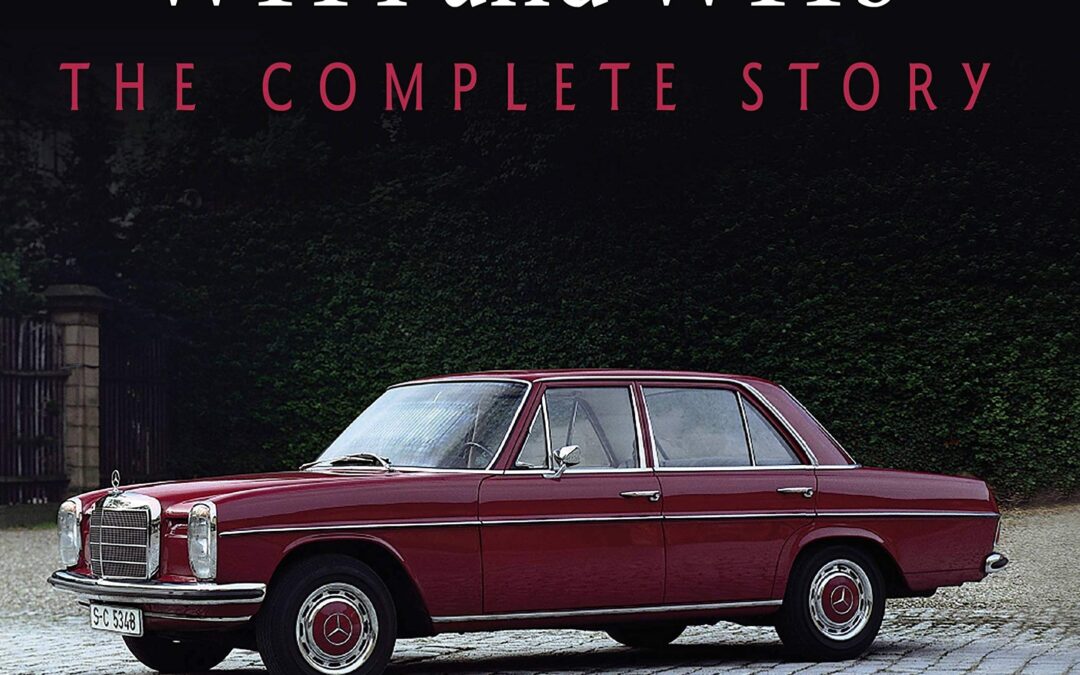
The W114 and W115 models were enormously successful for Mercedes-Benz, and their sales in nine years of production between 1967 and 1976 almost equalled the total of all Mercedes passenger models built in the 23 years between 1945 and the time of their introduction in 1968.
There were many reasons for this success, but perhaps the most important was that Mercedes expanded the range to include a simply vast amount of variants including four-cylinder and six-cylinder petrol engines, four-cylinder diesels; saloons, coupes and long-wheelbase models.
This book features the story of the design and development of the W114 and W115 ranges. It gives an extensively illustrated look at the special bodywork on both standard and long-wheelbase models, and includes full technical specifications, including paint and interior trim choices. There is a chapter on the special US variants. Production tables and model type codes are given as well as the Experimental Safety Vehicles developed from these cars. Finally, there is a chapter on buying and owning a 114- or 115-series Mercedes.
Today, the W114s and W115s have a strong enthusiast following around the world. They are appreciated as survivors from a simpler age, as the cars that laid the foundations for the hugely successful ranges of mid-sized saloons that followed from Mercedes, and because of the sheer diversity of their types and specifications. No enthusiast of these fine models will want to be without this book.

“Every Coupé from Mercedes-Benz has always embodied elegance on four wheels, whether today, 40 years ago or a century ago; our coupés are legends of each and every era in which they were built.” – Michael Bock, Head of Mercedes-Benz Classic
In the very beginning, the automotive industry was dominated by open-top vehicles whose body shapes were very much based on the horse-drawn carriage, there were open and closed carriages and then there was the Coupé. Mercedes-Benz is and has always been a trendsetter, not only in terms of technology, but also in design but what must never be underestimated was the idea of moving away from the ‘classic Coupé saloon style body but also what had become their corporate identity, the Mercedes-Benz, radiator grill.
With over 300 photographs and illustrations, this first volume of the Mercedes-Benz Coupe includes an overview of the early days of ‘Sports-Car’ design and the influences of aerodynamics on design evolution. The book discusses the early protagonists at Daimler-Benz and how they influenced design of the Coupe shape. It shows how the Racing Coupe influenced what became the production Sport Coupe, and covers the experimental and one-off prototypes and the continuation of the Super Sport Light concept through the ‘S-Class’ range.
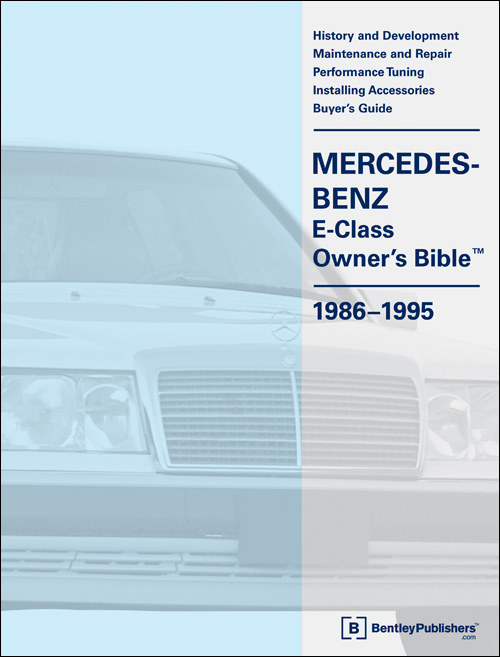
- History and Development
- Maintenance and Repair
- Performance Tuning
- Installing Accessories
- Buyer’s Guide
| The E-Class Owner�s Bible” is an E-class buyer�s guide, maintenance handbook and technical reference source wrapped into one. It is full of tech tips, service hints and system descriptions, plus lots of insightful information about the W124 E-Class chassis.
This book can help steer you through the purchase of your first Mercedes-Benz, provide the information necessary to maintain your E-Class to factory standards, give you the assurance to speak knowledgeably to your service professional and provide you with the hot setup for better road handling.
Models included in this Mercedes-Benz repair manual:
Gasoline engine:
- 260E
- 300E, 300E 2.6, 300E 2.8, 300E 4MATIC
- 300CE, 300CE cabrio
- 300TE, 300TE 4MATIC
- 400E
- 500E
- E320 sedan, coupe, cabrio and wagon
- E420
- E500
Diesel engine:
- 300D Turbo, 300D 2.5 Turbo, 300TD Turbo, E300 Diesel
|
|
The prospective buyer will also find tips on what to watch out for, why a pre-purchase inspection is important and why one model may be preferred to another. Do-it-yourself owners will discover a huge hands-on maintenance chapter to help keep their E-Class at peak efficiency.
Technical highlights:
- Comprehensive maintenance procedures, including HVAC microfilter replacement, brake pad and rotor replacement and engine oil and fluid change procedures listing the necessary tools, tightening torques and fluid capacities.
- Year-by-year analysis of E-Class technical highlights, including the inspiring 500E sports sedan and when the multi-cam M104 engine replaced the M103 single cam workhorse.
- Buying tips on how to get the best car for the least amount of money, things to look for during the test-drive and how having a prepurchase inspection can potentially save you thousands of dollars.
- Seasoned advice on choosing the right repair shop, be it an authorized Mercedes-Benz dealer, an independent specialist or an all makes-all models shop.
- Detailed technical information on vehicle systems, including engines, suspension, drivetrain, body and interior features.
- Performance modifications, including a listing of parts needed to upgrade to the Sportline suspension.
- A brief historical overview of Mercedes-Benz, the world�s oldest car company.
To bring you this authoritative volume, Bentley Publishers has teamed up with Stu Ritter, a 25-year independent Mercedes-Benz repair shop owner/technician and current technical editor of The Star (the magazine of the Mercedes-Benz Club of America).

When Bruno Sacco walked through the doors on his first day at Mercedes-Benz on 13 January 1958, it is highly unlikely that his Daimler-Benz colleagues could ever imagine that this nervous young man would not only revolutionize design but would change the way design and innovation connected with brand tradition forever.
Bruno Sacco is one of the most influential automotive designers of the late twentieth century; many models launched during his era now characterize the Mercedes-Benz brand. When Nik Greene asked Bruno Sacco to assist with this book, he replied humbly “No-one designs a car alone, and more to the point, I never, for one minute, wanted to. From the moment I became Head of Design, I put down my pens and became a manager of minds.”
With over 330 photographs and illustrations, this book includes an overview of the early days of functional vehicle design and the influence of safety on design evolution. The protagonists of Daimler-Benz design from Hermann Ahrens to Paul Bracq are covered. Design philosophy and innovation under Bruno Sacco is discussed along with the Sacco-designed cars and, finally, the Bruno Sacco legacy.
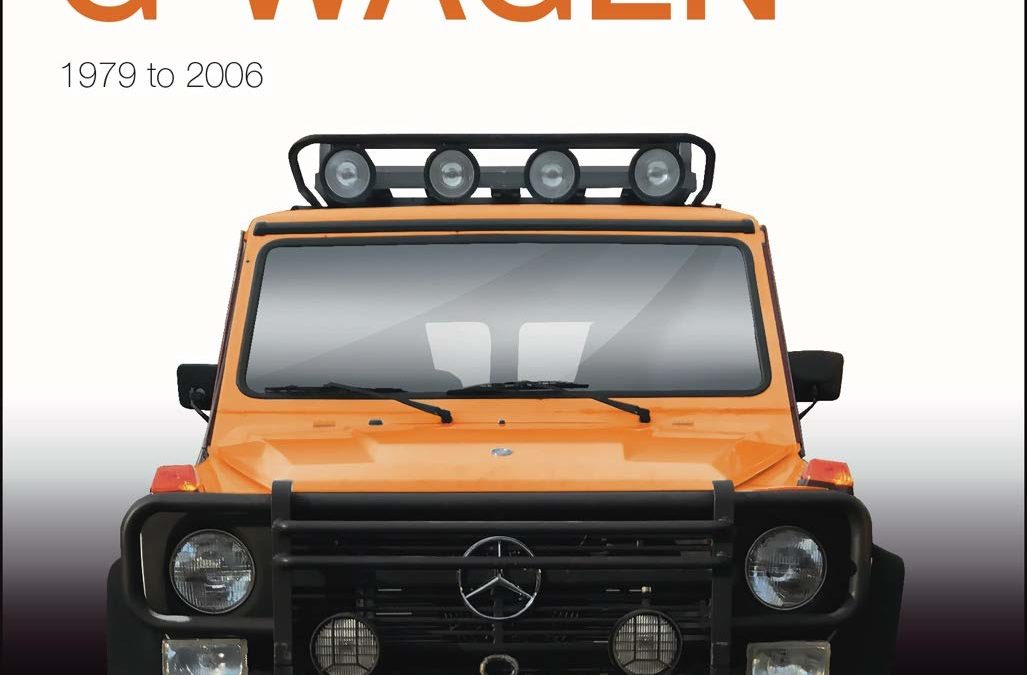
Codenamed W460, the iconic Mercedes-Benz G-Wagen, with its boxy, square edged no frills look, set out to be Stuttgart’s answer to the Range Rover. However, by going back to Gottlieb Daimler’s premise of “Nothing but the best,” it quickly took its place throughout the world as “The Best 4X4.”
This Essential Buyer’s Guide will navigate you through the various model changes, starting from the simple hand-built W460, through to the more luxurious market of the W463. You will find details of model changes, engine specifications, and issues that you may come across when looking to buying one of the best purpose-made vehicles around.
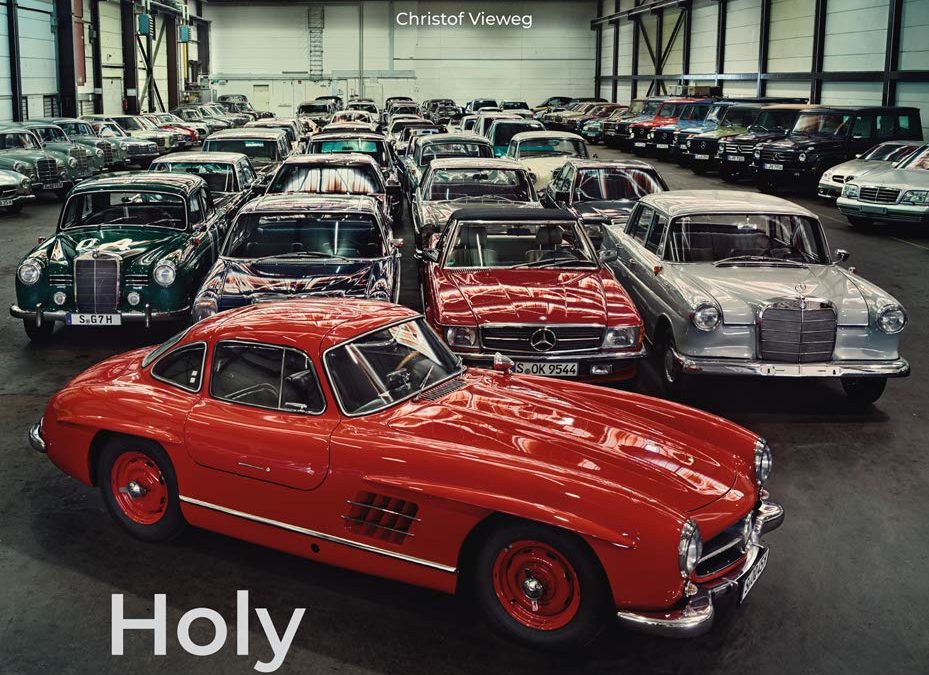
A thrilling photographic account of the treasure trove of cars kept by the Mercedes-Benz Museum in Stuttgart that are not currently on display to the public
The Mercedes-Benz Museum in Stuttgart is one of the largest and most visited industrial museums in the world. But the 160 or so automobiles on display are only a small part of the shiny chrome treasures that form the Mercedes-Benz Classic vehicle collection. Another 1,000 historical models are ‘parked’ in secret places outside Stuttgart – these secret places are called the ‘Holy Halls’.
This collection is the treasure trove of the brand. It has existed since 1923 and offers a comprehensive overview of the model history of Mercedes-Benz. Cars with special technology and equipment are stored here, as are the silver arrows of Caracciola, Lang and Fangio, the Pope’s carriages, the state cars of the young Federal Republic of Germany or Mercedes models that became collectors’ items due to their prominent previous owners. Some of these exhibits are well protected and waiting in special wooden boxes for their next use at exhibitions, fairs, events or classic car races. Others stand next to each other as silent witnesses of the past. Each time a model is modified, the collection is extended by the last vehicle of the discontinued series, which experts believe will be one of tomorrow’s classic cars.
The ‘Holy Halls’ are not open to the public; enquiries from editorial offices and TV teams have often been rejected. But, during the years 2016 to 2018, almost all the vehicles of the Mercedes collection were photographed. Thus, a unique photographic collection was created, the automobile history from more than ten decades; many of the previously unpublished photographs are exclusively available here in this book. In addition, Mercedes-Benz Classic agreed to open the ‘Holy Halls’ for an external photo team and provide information about the car models stored there.
For the first time, it has been possible to produce a fascinating illustrated book with panoramic and detailed shots from the ‘halls’, and lively photo reports on cars that tell stories – from the first Benz batting motor car to the latest Formula 1 racing car. Equally thrilling are the stories of the unique specimens and prototypes that are stored in the ‘Holy Halls’: Mercedes models that never went into production are presented for the first time. The stories about the selected automobiles of the vehicle collection are supplemented by historical recordings from the Mercedes-Benz Classic archive.
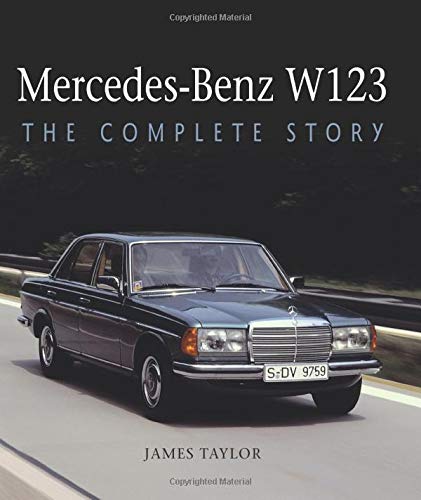
The Mercedes-Benz W123 was launched in 1976 and sales quickly surpassed those of its predecessor, the W114. The W123 went on to become the most successful Mercedes, selling 2.7 million cars.This book features the history of the development of the car within the context of the Mercedes-Benz company and global motor industry; the styling, engineering and technical advances introduced over the lifetime of the three series, and the press reactions to them.
Full technical specifications are given together with customer options, equipment and interior trim for each model. Production numbers and vehicle number sequences are listed and little-known details of the manufacture of the car in China are given. There is a chapter on buying and owning a 123-series Mercedes.
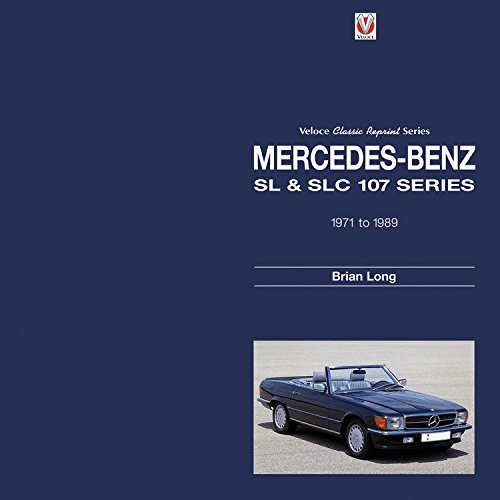
It’s hard to believe, but the 107-series Mercedes-Benz SL was launched almost 50 years ago. However, its timeless styling has kept it fresh and attractive in the eyes of a new generation of enthusiasts, as well as those going back to the car having owned one when they were still in dealerships. The availability of the practical SLC (an extended, four-seater fixed-head coupé version), simply adds to the desirability of these classic German machines. A combination of superb original design, peerless engineering and build quality has ensured that many of these cars can still be seen in regular use today.
Covering the SL and SLC’s ever-changing specification, race and rally record – and its presence in many of the world’s major markets – is a huge task, but it’s all presented here in definitive detail, along with stunning contemporary photography.
Reissued as part of Veloce’s Classic Reprint series, this volume will readily grace any reference library shelf or connoisseur’s coffee table.
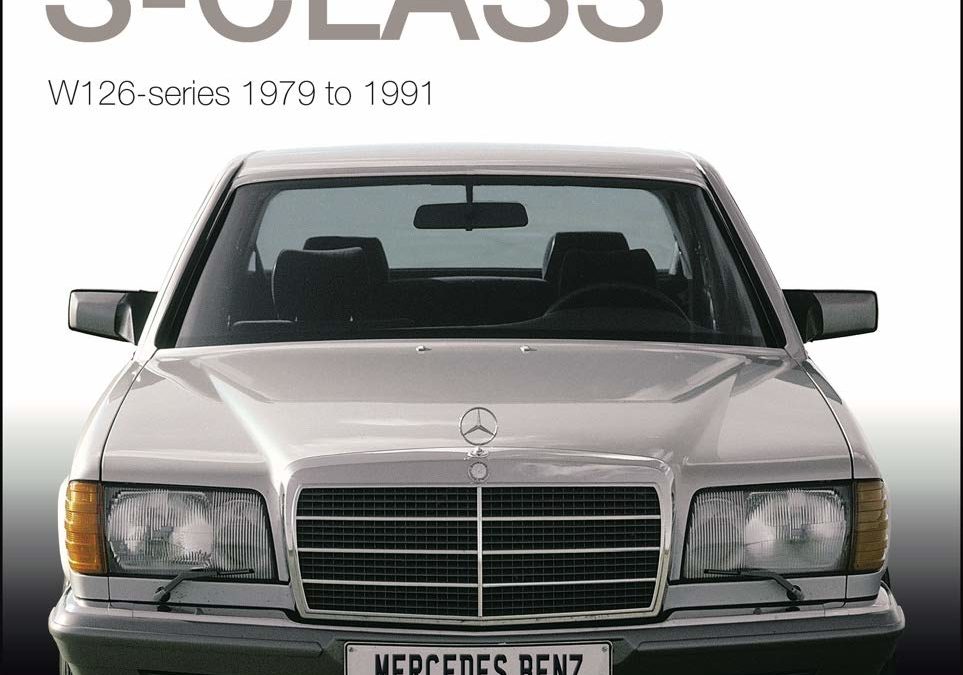
Mercedes-Benz S-Class is an introduction to owning, driving and maintaining a Mercedes-Benz S-Class W126 Series, and a step-by-step guide to evaluating one for purchase. This book includes colour photos of what to look for and what to avoid, plus a realistic assessment of running and restoration costs, as well as market values. This includes servicing costs, spare parts prices, and the relative values of the various models, specifications and vehicle conditions you are likely to encounter. Written in an easy to follow, jargon-free style, this book will equip you with all you need to know to buy the Mercedes S-Class of your dreams.
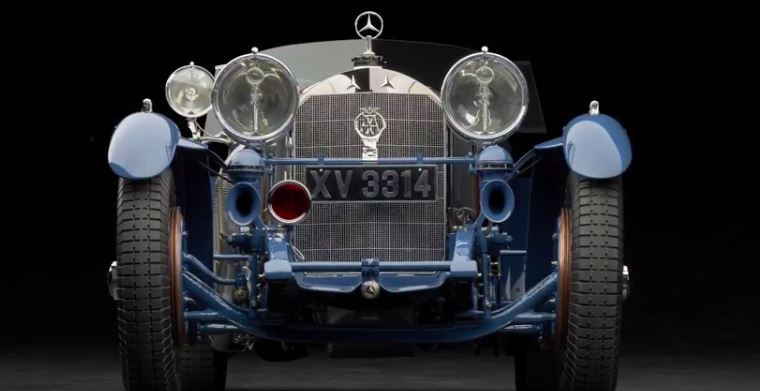
The history of the 1928 Mercedes-Benz S Barker Tourer in honor of its being named Best of Show at the 2017 Pebble Beach Concours d’Elegance.
Large format hand made book dedicated to the Best of Show winner if the 2017 Pebble Beach Concours D’Elegance.
Photographs by Michael Furman and text by John Nikas.
Watch video HERE
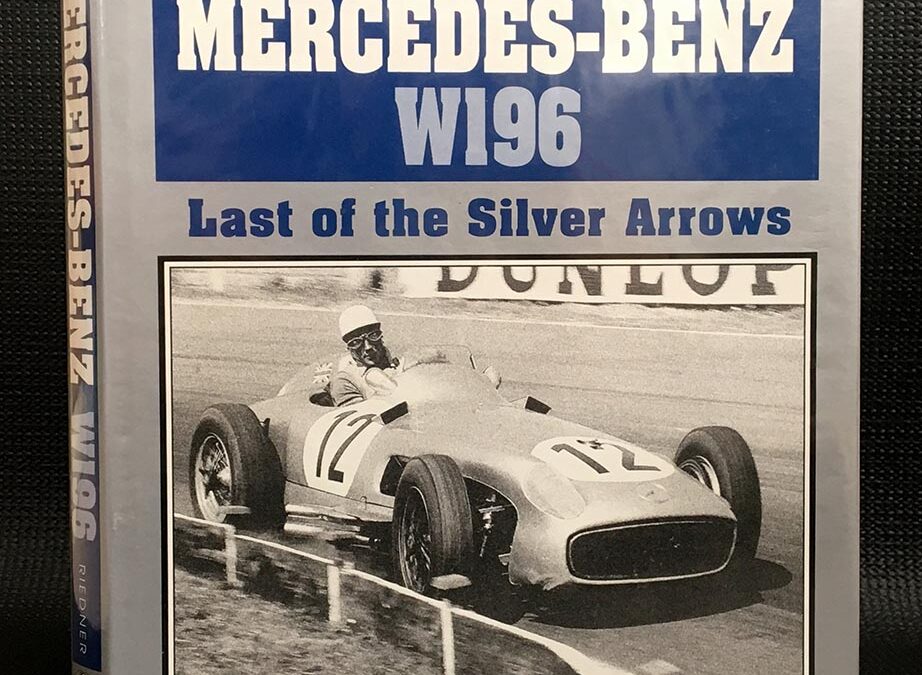
The Last of the Silver Arrows. After their domination in the thirties Mercedes-Benz returned for 1954-55 Seasons & did it all over again. This is the story of that car, the team, plenty of old & familiar faces & some new ones. Fangio was brought in to lead the assault with Kling & Herrmann for the first year & with Moss for 1955. This was a total commitment by Mercedes as they took on & did the same in Sports Car racing at LeMans, Millie Miglia & elsewhere, but here we concentrate on Grand Prix. The book is as comprehensive as is possible running to well over 300 large format pages of text photo & pull out drawings. They came, They conquered, They Left.
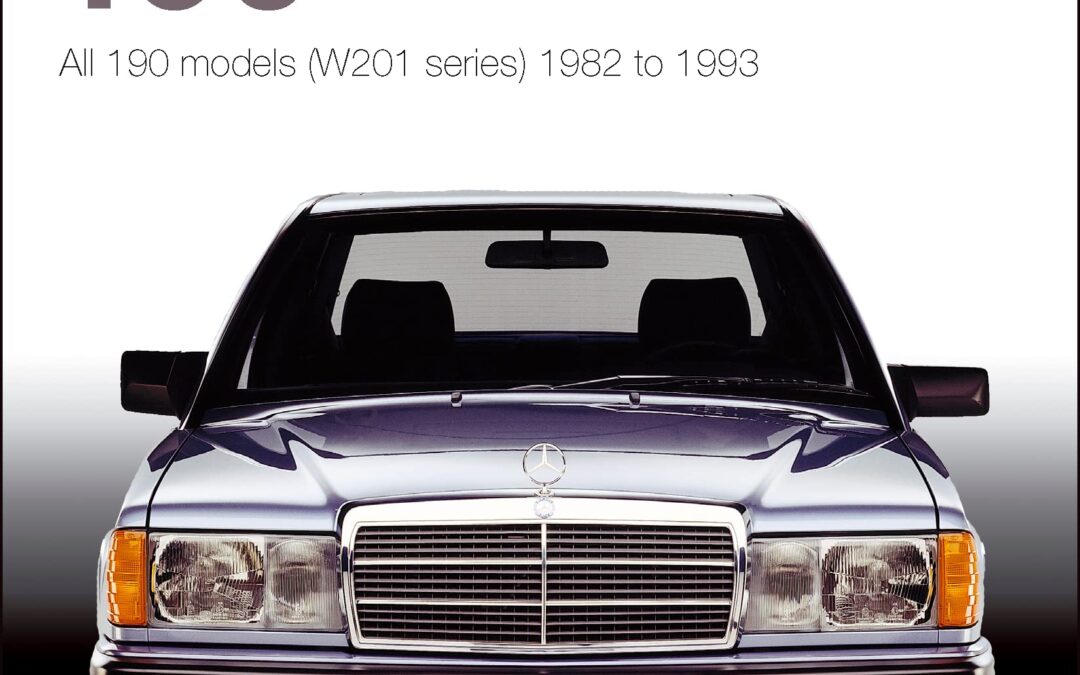
The 190 (W 201) was a landmark car for Mercedes-Benz: the predecessor to today’s C-Class models, it was the company’s first compact saloon (sedan) and combined advanced engineering with a new direction in body styling, later followed by the W124 and R129 series. Engines available included robust petrol and diesel ‘fours’, as well as a silky ‘straight-six’. The sporting 190 E 2.3-16 and 2.5-16 models, initially developed with Cosworth, took Mercedes to new levels of performance. Altogether, nearly 1.9 million cars were produced, and today the 190 is an increasingly sought-after modern classic. This guide will help you learn about the differences between models, and what to look for when buying. What are the true running costs, and what issues – with the mechanicals, body or interior – should you be wary of? Is a restoration worth considering? This handy guide will take you step-by-step through the process of finding and evaluating a good 190 and making a successful purchase. Essential data and information about clubs and specialists will help you look after and enjoy your 190.










